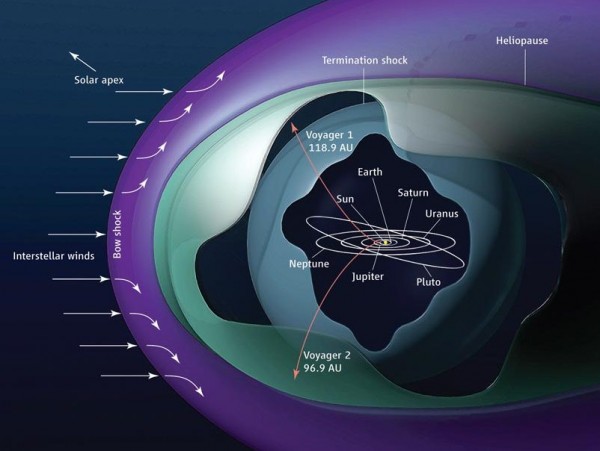New Discovery Shows Galactic Cosmic Rays
More Abundant
Display problems?
View this newsletter in your browser.
by
Mitch Battros - Earth Changes Media
July 01
2013
Scientists using Voyager 1 data provides
new detail of a region where our solar
systems heliosphere (the bubble around
our Sun and all its planets) and
interstellar space connect. Researchers
from the Johns Hopkins University
Applied Physics Laboratory have
discovered a curious and unexpected
charged-particle environment - in a
region known as the "magnetic highway".
For the first time, scientists can now
see the highest level so far of cosmic
ray particles from outside the
heliosphere coming from our galaxy
'Milky Way'.
Three papers just published in the
journal Science, describe how Voyager
1's entry into this region called the
magnetic highway, resulted in
simultaneous observations of the highest
rate so far of charged particles from
outside heliosphere and the
disappearance of charged particles from
inside the heliosphere.
Scientists have seen two of the three
signs of interstellar arrival they
expected to see…charged particles
disappearing as they zoom out along the
solar magnetic field and cosmic rays
from far outside zooming in. Scientists
are looking for a third sign - showing
an abrupt change in the direction of the
magnetic field indicating the presence
of the interstellar magnetic field.
The heliosphere extends at least 8
billion miles (13 billion kilometers)
beyond all the planets in our solar
system. It is dominated by the Sun's
magnetic field and an ionized wind
expanding outward from the Sun. Outside
the heliosphere, interstellar space is
filled with matter from other stars and
the magnetic field present in the nearby
region of the Milky Way.
FULL ARTICLE -
http://bit.ly/159Vh1w
(requires subscription)

![]()


Mitch Battros
Producer - Earth Changes Media
Email: newsletter@earthchangesmedia.com
Web: http://www.earthchangesmedia.com